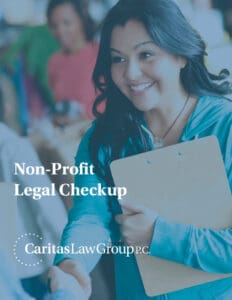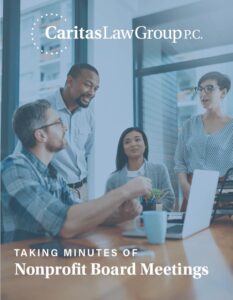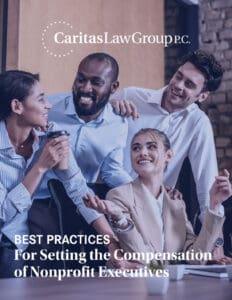OUR EXPERIENCE
We serve nonprofits of all types and sizes, offering creative legal advice grounded in over 20 years of specialized experience in nonprofit law.
In addition to serving a wide variety of nonprofit organizations, our clients also include donors making significant or complex gifts, businesses forming foundations for cause-marketing campaigns, and nonprofit founders considering the best philanthropic vehicle to meet their needs.

RESOURCES
Free Guides for your Nonprofit Organization
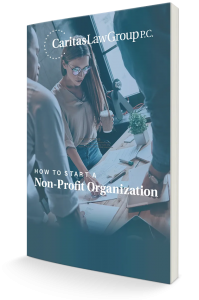
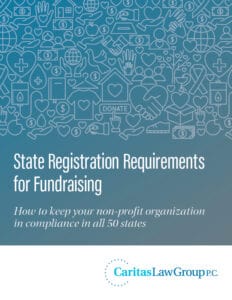
There are many legal issues specific to nonprofit organizations that can be easily prevented by taking certain steps early on in the life of the organization. For more established nonprofits, it’s a good idea to conduct a periodic review of your compliance documents, tax filings, and record keeping. We created this checklist to help you understand the items that a lawyer will assess when reviewing the overall legal health of your nonprofit organization.
Meeting minutes are a necessary form of record-keeping for all nonprofit organizations, regardless of size. These records can be used as legal evidence by the courts, IRS, and other regulators, so it’s important to ensure minutes are properly completed and stored. But where do you start?
Executives from tax-exempt organizations can only be paid “reasonable compensation” for their services.
To avoid excise taxes, nonprofits should strongly consider increasing the time and attention they devote to investigating, deliberating, documenting, and reporting executive compensation.
CharityLawyer Blog offers plain language explanations of complex nonprofit law concepts, discussions of current events and links to valuable resources for nonprofits.
"*" indicates required fields
FEATURED BLOG POSTS
- Understanding the 5% Payout Rule for Private Foundations
If you’re involved with a private foundation, you’ve likely encountered the “5% payout rule.” This well-intentioned but often perplexing regulation governs charitable giving by private foundations. In this blog post, we’ll explore the origins, rationale, and practical considerations of the 5% payout rule. The Historical Context of the 5% Payout Rule The 5% payout rule
- The One Big Beautiful Bill: A Mixed Bag for Nonprofits and Philanthropy
On July 4, 2025, President Trump signed into law what’s been informally dubbed the “One Big Beautiful Bill”—a sweeping tax and policy package passed via budget reconciliation. While much of the press coverage has focused on the bill’s political implications and tax cuts, the nonprofit sector is left sorting through the real-world impact. Spoiler alert:
- IRS Signals Churches Can Endorse Candidates During Services
In a joint filing with the plaintiffs, the IRS stated that communications from a house of worship to its congregation, made in connection with religious services and through its usual channels, do not violate the Johnson Amendment. Internal communications as “family discussions” The agency described these communications as similar to a “family discussion concerning candidates.”

